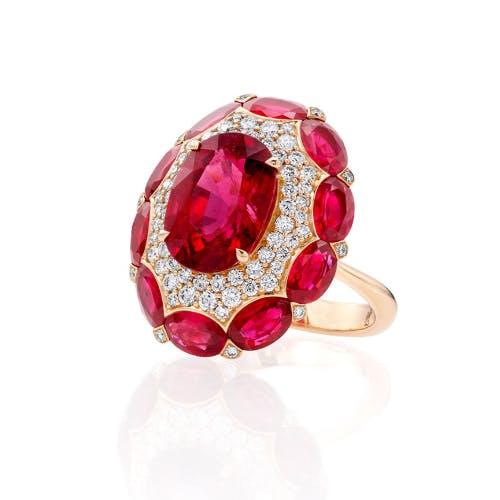Learn About Tourmaline
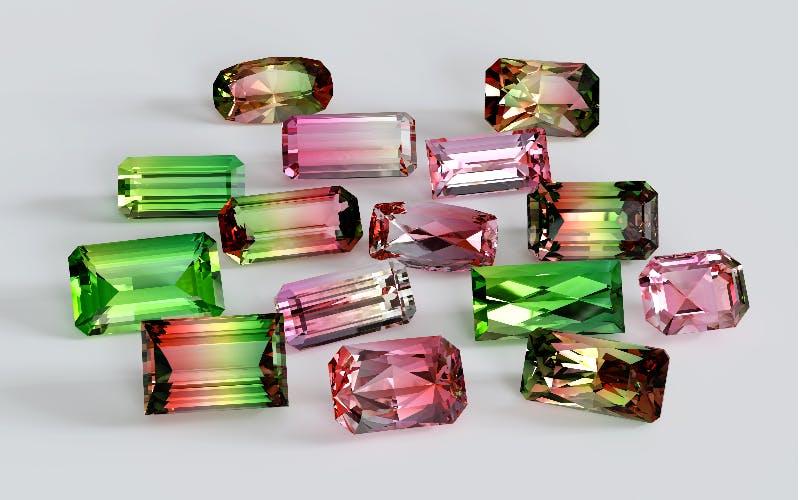

Tourmaline’s colors have many different causes. It’s generally agreed that traces of iron, and possibly titanium, induce green and blue colors. Manganese produces reds and pinks, and possibly yellows. Some pink and yellow tourmalines might owe their hues to color centers caused by radiation, which can be natural or laboratory-induced.
Tourmaline Birthstones & Anniversaries
Tourmaline is a birthstone for October, along with opal. Tourmaline is also the gem of the eighth anniversary.
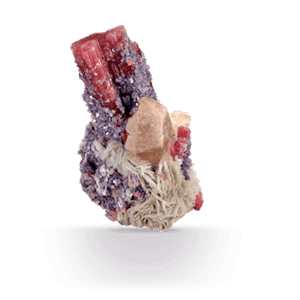
Rough Tourmaline
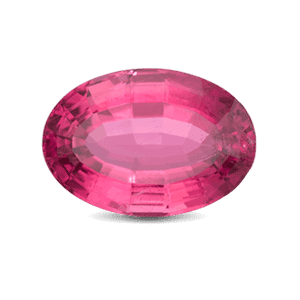
Polished Tourmaline
Overview of Tourmaline
The name “tourmaline” comes from the Sinhalese words tura mali, which mean “stone of mixed colors.” As its name implies, tourmaline stands apart from other gemstones with its broad spectrum of colors in every shade of the rainbow. Tourmaline is not one mineral, but a fairly complex group of minerals with different chemical compositions and physical properties. Certain trace elements produce distinct colors, and many resulting varieties have their own names.
Black tourmaline, known as “schorl” is rich in iron, which causes dark shades from deep brown to bluish-black. This variety makes up 95 percent of all tourmaline, though most of it isn’t gemstone-quality. Dravite or brown tourmaline is rich in magnesium, which causes colors ranging from brown to yellow. It’s named for the Drave District of Carinthina (now Slovenia) where this stone is found. Elbaite offers the widest range of gem-quality tourmaline colors, due to lithium traces combined with other coloring elements. Rubellite or red tourmaline is caused by manganese. However, if the color becomes less vibrant under different light sources, it may be called pink tourmaline. Indicolite or blue tourmaline can appear purplish blue or bluish green, depending on the amount of iron and titanium. Verdelite or green tourmaline can resemble emerald. However, if its color is caused by chrome and vanadium, it’s called a chrome tourmaline. Paraíba tourmaline is a vividly colored purplish or greenish blue variety found in Paraíba, Brazil. It’s the most recently discovered, and because of its desirably intense colors, it’s one of the most valuable. The element copper is responsible for its vivid colors. Copper-bearing tourmaline is also found in other parts of the world such as Mozambique and Nigeria; but only copper-bearing tourmaline from Paraíba, Brazil is called “Paraíba tourmaline.” Achroite or colorless tourmaline is rare.
Parti-colored tourmaline displays more than one color, due to chemical fluctuations during crystallization. A common color combination is green and pink. These are often cut in slices to reveal a red center surrounded by a green rim, earning the name “watermelon tourmaline.”
Tourmaline is mined in Brazil, Sri Lanka, Nigeria, Mozambique, Madagascar, Afghanistan, Pakistan and the U.S.—primarily Maine and California.
Tourmaline is desirable because of its sheer range of color options. Combined with a good hardness of 7 to 7.5 on the Mohs scale, tourmaline makes very wearable birthstone jewelry.
One of this gemstone’s most impressive traits is its ability to become electrically charged through heat (pyroelectricity) and through pressure (piezoelectricity). When charged, tourmaline can act as a magnet by oscillating and by attracting or repelling particles of dust.
History of Tourmaline
Because of its colorful occurrences, tourmaline has been confused with other gemstones throughout history.
In the 1500s, a Spanish conquistador found green tourmaline in Brazil—which he mistook for emerald. His error held until the 1800s, when mineralogists finally identified tourmaline as its own mineral species.
Variations of the name “schorl” may have been used to describe black tourmaline even before 1400. The name comes from a village in Saxony, Germany, (now called Zschorlau) near a mine with black tourmaline deposits.
The Dutch East India Company brought Sri Lankan tourmaline to Europe for centuries before traders realized it was the same mineral as schorl.
American tourmaline deposits caused the gemstone’s spike in popularity. In 1876, mineralogist George Kunz launched a craze when he sold green tourmaline from Maine to Tiffany & Co.
In the early 1890s, tourmaline was reported in California—where Native Americans had, for centuries, given certain colors of the gemstone as funeral gifts.
At that point, China represented the biggest market for tourmaline. The Chinese Empress Dowager Cixi was particularly fond of pink tourmaline. She purchased large quantities of it from deposits in San Diego County.
In fact, the Chinese market was so critical to tourmaline, that when the Chinese government collapsed in 1912, it took tourmaline trade down with it.
Brazilian tourmaline discoveries in the 1980s and 90s reignited interest in this gemstone, because material mined in Paraíba displayed such striking neon greens, radiant blues, and vivid violets. This region has produced the world’s finest, most valuable specimens of tourmaline—including the world’s largest, weighing 191.87 carats.
While plenty of tourmaline is mined around the world, it’s rare to find fine gem-quality tourmaline in bright colors. This range of material means that the price of tourmaline can vary almost as much as the color.
Frequently asked questions about Tourmaline
Gemstone Guide
Learn more about colorful gemstones, their symbolism, which stone represents your birthstone, which stone to celebrate an Anniversary with and more ways to incorporate colorful gems in to your jewelry box.
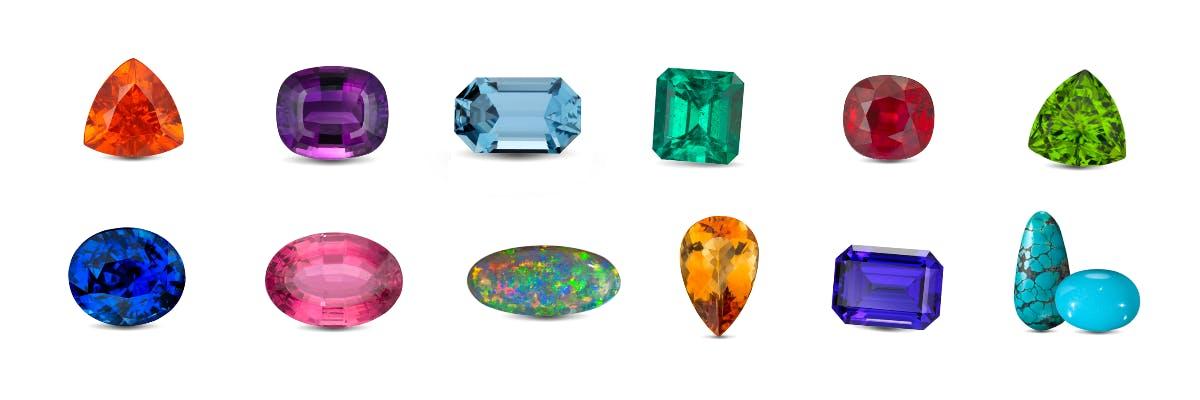

Visit us in any Lee Michaels Fine Jewelry location to browse a more robust assortment of tourmaline earrings, tourmaline necklaces, tourmaline bracelets, David Yurman tourmaline jewelry and many more. Shop more jewelry trends at any Lee Michaels Fine Jewelry store near you. In Baton Rouge, Louisiana, a Lee Michaels Fine Jewelry store is located inside the Mall of Louisiana and there is also a Lee Michaels Fine Jewelry store located at the corner of Corporate Boulevard and Jefferson Highway near mid-city. In Lafayette, Louisiana, a Lee Michaels Fine Jewelry store is located on Ambassador Caffery. In Shreveport, Louisiana, a Lee Michaels Fine Jewelry store is located on Youree Drive at East 70th. Just outside of New Orleans, Louisiana, in Metairie, a Lee Michaels Fine Jewelry store is located on Causeway Boulevard at Lakeside Shopping Center. In San Antonio, Texas there are two Lee Michaels Fine Jewelry stores. Find one at The Shops at La Cantera and another located inside the Northstar Mall on San Pedro Avenue. In Jackson, Mississippi, visit a Lee Michaels Fine Jewelry store located at the Renaissance at Colony Park on Highland Colony Parkway. Visit the newest Lee Michaels Fine Jewelry store, located in ABQ Uptown of Albuquerque, New Mexico.
